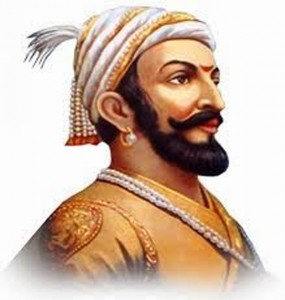Shivaji Bhonsle (19 February 1630 – 3 April 1680), also known as Chhatrapati Shivaji Maharaj, was an Indian warrior king and a member of the Bhonsle Maratha clan. Shivaji carved out an enclave from the declining Adilshahi sultanate of Bijapur that formed the genesis of the Maratha Empire. In 1674, he was formally crowned as the Chhatrapati (Monarch) of his realm at Raigad.
Shivaji established a competent and progressive civil rule with the help of a disciplined military and well-structured administrative organisations. He innovated military tactics, pioneering non-conventional methods which leveraged strategic factors like geography, speed, and surprise and focused pinpoint attacks to defeat his larger and more powerful enemies. He revived ancient Hindu political traditions and court conventions and promoted the usage of Marathi and Sanskrit, rather than Persian, in court and administration.
Shivaji’s legacy was to vary by observer and time but began to take on increased importance with the emergence of the Indian independence movement, as many elevated him as a proto-nationalist and hero of the Hindus. Particularly in Maharashtra, debates over his history and role have engendered great passion and sometimes even violence as disparate groups have sought to characterise him and his legacy.
Shivaji was born in the hill-fort of Shivneri, near the city of Junnar in Pune district on 6 April 1627 or 19 February 1630. Per legend, his mother named him Shivaji in honour of the goddess Shivai, to whom she had prayed for a healthy child. Shivaji was named after this local deity. Shivaji’s father Shahaji Bhonsle was a Maratha general who served the Deccan Sultanates. His mother was Jijabai, the daughter of Lakhujirao Jadhav of Sindkhed (Sindkhed Raja). At the time of Shivaji’s birth, the power in Deccan was shared by three Islamic sultanates: Bijapur, Ahmednagar, and Golconda. Shahaji often changed his loyalty between the Nizamshahi of Ahmadnagar, the Adilshah of Bijapur and the Mughals, but always kept his jagir (fiefdom) at Pune and his small army with him.
The question of Shivaji’s heir-apparent was complicated by the misbehaviour of his eldest son Sambhaji, who was irresponsible and “addicted to sensual pleasures.” Unable to curb this, Shivaji confined his son to Panhala in 1678, only to have the prince escape with his wife and defect to the Mughals for a year. Sambhaji then returned home, unrepentant, and was again confined to Panhala.
In late March 1680, Shivaji fell ill with fever and dysentery, dying around 3–5 April 1680 at the age of 52, on the eve of Hanuman Jayanti. Putalabai, the childless eldest of the surviving wives of Shivaji committed sati by jumping in his funeral pyre. The other surviving spouse, Sakwarbai, was not allowed to follow suit because she had a young daughter. Rumours followed Shivaji’s death, with Muslims opining he had died of a curse from Jan Muhammad of Jalna, and some Marathas whispering that Soyarabai, the youngest of the three wives who survived him, had poisoned him so that his crown might pass to her 10-year-old son Rajaram.After Shivaji’s death, Soyarabai made plans with various ministers of the administration to crown her son Rajaram rather than her prodigal stepson Sambhaji. On 21 April 1680, ten-year-old Rajaram was installed on the throne. However, Sambhaji took possession of the Raigad Fort after killing the commander, and on 18 June acquired control of Raigad, and formally ascended the throne on 20 July. Rajaram, his wife Janki Bai, and mother Soyrabai were imprisoned, and Soyrabai executed on charges of conspiracy that October.
(Ref: https://en.wikipedia.org/wiki/Shivaji & Eprahaar)
